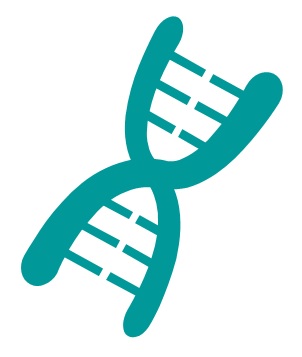CEF Control Peptide Pool (HLA Class I Control)
CEF32 peptide pool: Positive control for CD8 T cell activation
CEF (cytomegalovirus,Epstein-Barr virus,and influenza virus) control peptide pool for immune cell activation. CEF32 peptide pool is a positive control for CD8 cell activation.
The CEF Control Peptide Pool (HLA Class I Control) is a mixture of 32 peptides derived from the human Cytomegalovirus (CMV),Epstein-Barr Virus (EBV) and Influenza Virus (Flu). The CEF Control Peptide Pool (HLA Class I Control) contains a defined HLA class I-restricted T cell epitopes from these three viruses. CEF peptide pool stimulates CD8+ T cells and allows to ensure that PBMC (peripheral blood mononuclear cells) are still functionnal after storage,freezing/thawing by verifying secretion of cytokines from antigen-specific T cells.
Various formats are available. 15 nmol allow to stimulate 2 ×108cells.
Premium quality CEF peptide pool
SB-PEPTIDE’s CEF Control Peptide Pool is made of 32 peptides with a purity rate >95% and accurately quantified. SB-PEPTIDE is a leading peptide manufacturer. CEF32 pool is 100% made in house in its French manufacturing plant. The company ensures a strict control of production and batch-to-batch reproducibility. SB-PEPTIDE’s CEF pool is endotoxin free verified by LAL. Customizations and bulks are available upon request.
Download: CEF peptide pool datasheet
Technical specifications
 |
Sequences: 32 peptides from CMV,EBV,Flu – CEF peptide pool sequences |
 |
Purity : > 95% |
 |
Made in France |
 |
Counter-Ion : TFA Salts |
 |
Delivery format : Freeze dried in propylene 2mL microtubes |
 |
Other names : CEF-32,CEF positive control |
 |
Endotoxin free |
 |
Bulk available,customization available,individual peptides available |
CEF peptide pool price
| Product catalog | Size | Price € HT | Price $ USD |
| SB130-15NM | 15 nmol (~15µg/peptide) | 127 | 158 |
| SB130-60NM | 60 nmol (~60µg/peptide) | 440 | 550 |
| SB130-1015NM | 10 x 15 nmol | 880 | 1100 |
| SB130-5015NM | 50 x 15 nmol | 3300 | 4125 |
References
How much of Virus-Specific CD8 T Cell Reactivity is Detected with a Peptide Pool when Compared to Individual Peptides?
Immune monitoring of T cell responses increasingly relies on the use of peptide pools. Peptides,when restricted by the same HLA allele,and presented from within the same peptide pool,can compete for HLA binding sites. What impact such competition has on functional T cell stimulation,however,is not clear. Using a model peptide pool that is comprised of 32 well-defined viral epitopes from Cytomegalovirus,Epstein-Barr virus,and Influenza viruses (CEF peptide pool),we assessed peptide competition in PBMC from 42 human subjects. The magnitude of the peptide pool-elicited CD8 T cell responses was a mean 79% and a median 77% of the sum of the CD8 T cell responses elicited by the individual peptides. Therefore,while the effect of peptide competition was evident,it was of a relatively minor magnitude. By studying the dose-response curves for individual CEF peptides,we show that several of these peptides are present in the CEF-pool at concentrations that are orders of magnitude in excess of what is needed for the activation threshold of the CD8 T cells. The presence of such T cells with very high functional avidity for the viral antigens can explain why the effect of peptide competition is relatively minor within the CEF-pool.
A panel of MHC class I restricted viral peptides for use as a quality control for vaccine trial ELISPOT assays
Vaccines in general and HIV vaccines in particular are focusing ever more on the induction of cellular immunity specifically the generation of cytotoxic T cells (CTL). As progress is made towards developing a safe and effective HIV vaccine,there is a need for a robust,sensitive and reproducible assay to evaluate vaccine-induced cellular immunogenicity in Phase II/III trials. The enzyme-linked immunospot (ELISPOT) assay fits these criteria and is a technology that is readily transferable and amenable to high-through-put screening. There is a need for reagents that can be used as positive controls and for optimizing and standardizing the assay. We selected a panel of 23 8-11 mer Influenza virus (Flu),Cytomegalovirus (CMV) and Epstein Barr virus (EBV) epitopes recognized by CD8 positive T cells and presented by 11 class I HLA-A and HLA-B alleles whose cumulative frequencies represent >100% of Caucasian individuals. We examined interferon-gamma (IFN-gamma) secretion in peripheral blood mononuclear cells (PBMC) incubated with the peptides using a modified ELISPOT assay. IFN-gamma secretion was detected in 15/17 (88%) HIV-1 seronegative and 14/20 (70%) HIV-1 seropositive individuals. Release of IFN-gamma in response to the pool of peptides was CD8+ T cell mediated and HLA restricted. In vitro stimulation of PBMC with individual peptides or the pool of peptides led to the expansion of T cells capable of killing target cells expressing the appropriate viral antigen in a CTL assay. The size,shape and appearance of the spots produced using this peptide panel provided a standard for the establishment of acceptance criteria of spots for the evaluation of ELISPOT plates using an automated reader system.
Design and validation of an enzyme-linked immunospot assay for use in clinical trials of candidate HIV vaccines
The enzyme-linked immunosorbent (ELISPOT) assay,which enumerates peripheral blood mononuclear cells (PBMCs) releasing interferon gamma (IFN-gamma) on specific antigen stimulation,is becoming the assay of choice for evaluation of vaccine-induced cell-mediated immune responses in many clinical trials. A properly conducted trial requires the assays to be validated,especially should the trial lead to vaccine licensure. Here,the design and validation of an ELISPOT assay are described for use in clinical trials of candidate human immunodeficiency virus (HIV) vaccines,using a particular immunogen termed HIVA. This assay employs eight pools of 20 to 23 peptides each: seven pools are derived from the immunogen and one pool is derived from cytotoxic T cell epitopes of common human viruses serving as an internal positive control. The validation determined that first,the overall variation of a positive response of approximately 500 spot-forming units (SFU)/10(6) cells was 21%,while second,the average of 5 SFU/10(6) cells was detected for the seven HIVA-derived pools in HIV-uninfected individuals; third,a positive response to a peptide added to the assay pools was not occluded by the other pool peptides; fourth,the frequencies detected in fresh PBMCs were 2- to 3-fold higher compared with the same samples that had been cryopreserved; and finally,all seven HIV-derived pools induced IFN-gamma responses in PBMCs isolated from HIV-infected individuals. The limits of the validation of assays involving biological responses of living cells are discussed.
